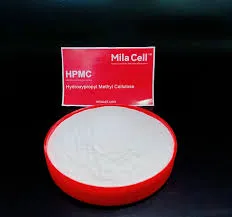
Δεκ . 05, 2024 13:00 Back to list
Understanding the Meaning and Significance of HPMC Acronym in Various Contexts
Understanding HPMC What Does It Stand For?
In the realm of chemistry and material science, acronyms are a common occurrence. They serve as shorthand for complex chemical compounds or processes, aiding communication among professionals in the field. One such acronym that often surfaces in discussions about various applications, particularly in pharmaceuticals and food industries, is HPMC. So, what does HPMC stand for, and why is it significant?
What is HPMC?
HPMC stands for Hydroxypropyl Methylcellulose, which is a semisynthetic, biodegradable polymer derived from cellulose. Cellulose is a natural polymer found in the plant cell walls, and HPMC is created by chemically modifying cellulose to enhance its solubility and functionality in various environments. The process involves the substitution of hydroxyl groups in cellulose with hydroxypropyl and methyl groups, thus altering its physical properties.
Properties and Applications of HPMC
HPMC is known for its remarkable properties, which makes it suitable for a wide range of applications
1. Water Solubility One of the most notable characteristics of HPMC is its solubility in water, forming a gel-like substance when mixed. This property is particularly advantageous in pharmaceuticals for creating drug formulations.
2. Thickening Agent HPMC is often used as a thickening agent in various products. Its ability to increase viscosity makes it a popular choice in food production, cosmetics, and personal care products. For instance, it is used in sauces, dressings, and ice creams to achieve desired texture and consistency.
3. Film-Forming In the pharmaceutical industry, HPMC is utilized as a film-forming agent. This property is vital for coating tablets and capsules, allowing for controlled release of the active pharmaceutical ingredient (API). The film can protect the drug from environmental factors, improving stability and bioavailability.
what does hpmc stand for

4. Binding Agent HPMC serves as an effective binder in tablet formulation. It helps in the cohesion of the powdered ingredients, ensuring that tablets maintain their integrity during manufacturing and handling.
5. Stabilizer In emulsions and suspensions, HPMC acts as a stabilizer, preventing the separation of phases. This is especially important in products like lotions and creams where a uniform mixture is required.
6. Hydrophilic Matrix HPMC is used in controlled release formulations due to its hydrophilic nature. It can swell in the presence of water, forming a gel that regulates drug release over time, which is beneficial for medications that require a prolonged therapeutic effect.
Role in the Food Industry
In the food industry, HPMC is often used as a food additive, denoted as E464. It is recognized for its safety and versatility, making it a popular choice in formulating low-fat and gluten-free food products. Its ability to retain moisture and enhance texture is crucial in improving the overall sensory experience of food items.
Safety and Regulatory Status
HPMC is generally recognized as safe (GRAS) by the U.S. Food and Drug Administration (FDA) and is permitted for use in food products, pharmaceuticals, and cosmetics in many countries. The extensive research on its safety profile, coupled with its natural origin, makes HPMC a favored ingredient across various industries.
Conclusion
In summary, HPMC, or Hydroxypropyl Methylcellulose, stands at the intersection of health, wellness, and nutrition. Its versatile properties allow it to play a significant role in pharmaceutical formulations, food products, and personal care items. As industries continue to innovate and seek out sustainable and effective ingredients, HPMC is likely to maintain its relevance and importance. Understanding HPMC not only reveals the intricacies of chemical compounds but also showcases the importance of scientific advancements in improving our everyday products.
-
Unlocking the Benefits of HPMC Products: A Gateway to Versatile Applications
NewsAug.07,2025
-
Unleashing the Potential of HPMC Ashland: A Comprehensive Look
NewsAug.07,2025
-
Tile Bonding Cellulose: The Key to Superior Adhesion and Durability
NewsAug.07,2025
-
Hydroxypropyl Methylcellulose Powder: The Versatile Component in Modern Pharmaceuticals
NewsAug.07,2025
-
Hydroxyethyl Cellulose: The Versatile Solution for Various Industries
NewsAug.07,2025
-
Hydroxyethyl Cellulose (HEC): The Versatile Polymer for Various Applications
NewsAug.07,2025







